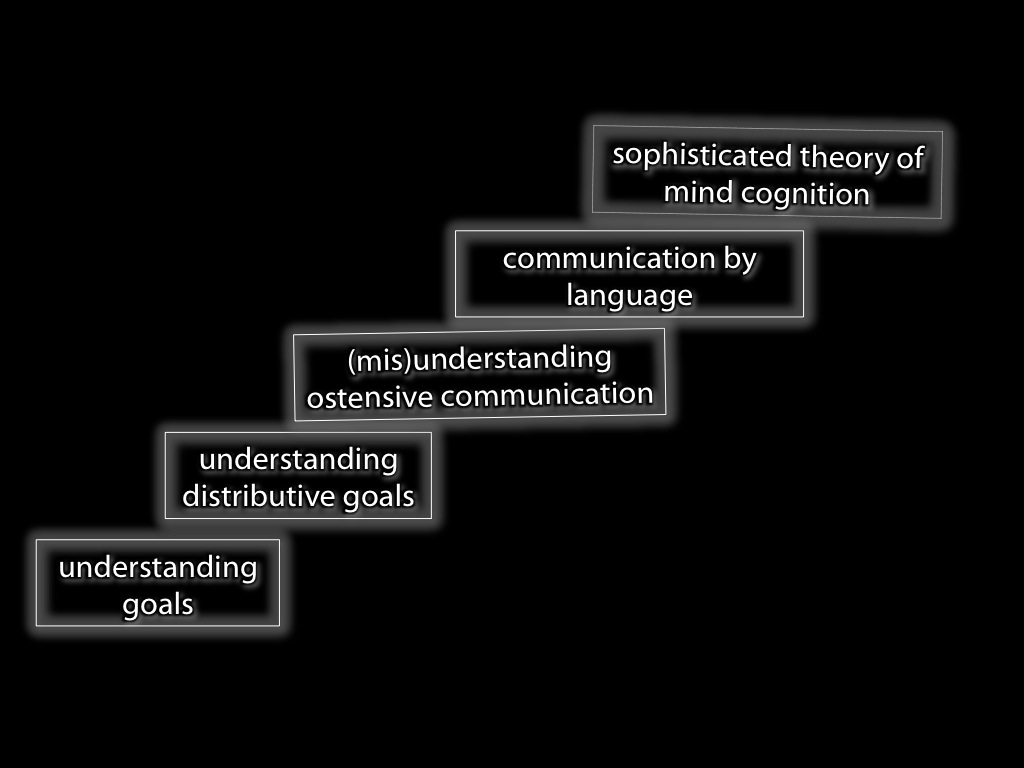Press the right key for the next slide (or swipe left)
also ...
Press the left key to go backwards (or swipe right)
Press n to toggle whether notes are shown (no equivalent if you don't have a keyboard)
Press m or double tap to see a menu of slides
From Action to Communication and Joint Action
Summary: How do humans first come to know truths about actions?
- Infants can track the goals of actions from six months or earlier
- How? (How is pure goal ascription possible?)
-- goal ascription is acting in reverse
- How do infants model actions?
Note that Csibra & Gergely offer a continuity hypothesis.
--RM(a,G) =df if M were tasked with producing G it would plan action a
- Infants have something like core knowledge of action
- How to get from that to knowledge of actions?
This is always the sticking point. I don't have a suggestion about how the transition might be made. I think that experience probably plays a role analogous to it plays in knowledge of colour. But there's something else. I want to suggest we can use these discoveries about action to fill out our understanding of communication, and of cooperative interactions.
Grice
Goal: get Ayesha to select the left container
Means: get Ayesha to recognise that I intend Ayesha to select the left container
Intention: to get Ayesha to selet the left container by means of getting Ayesha to recognisethat I am pointing to the left container with the intention that she select the left container.
Davidson
Goal: get Ayesha to select the left container
Semantic Intention: that Ayesha take this pointing gesture to refer to the left container
Ulterior Intention: that Ayesha select the left container
understanding action
R(a,G) defined with intention
R(a,G) defined non-psychologically
communication
Refers(gesture,object) defined with communicative intention
R(a,G) defined non-psychologically
cooperative interaction
R(a1, a2, ..., G) defined with shared intention
R(a1, a2, ..., G) defined with expectations about common goals
